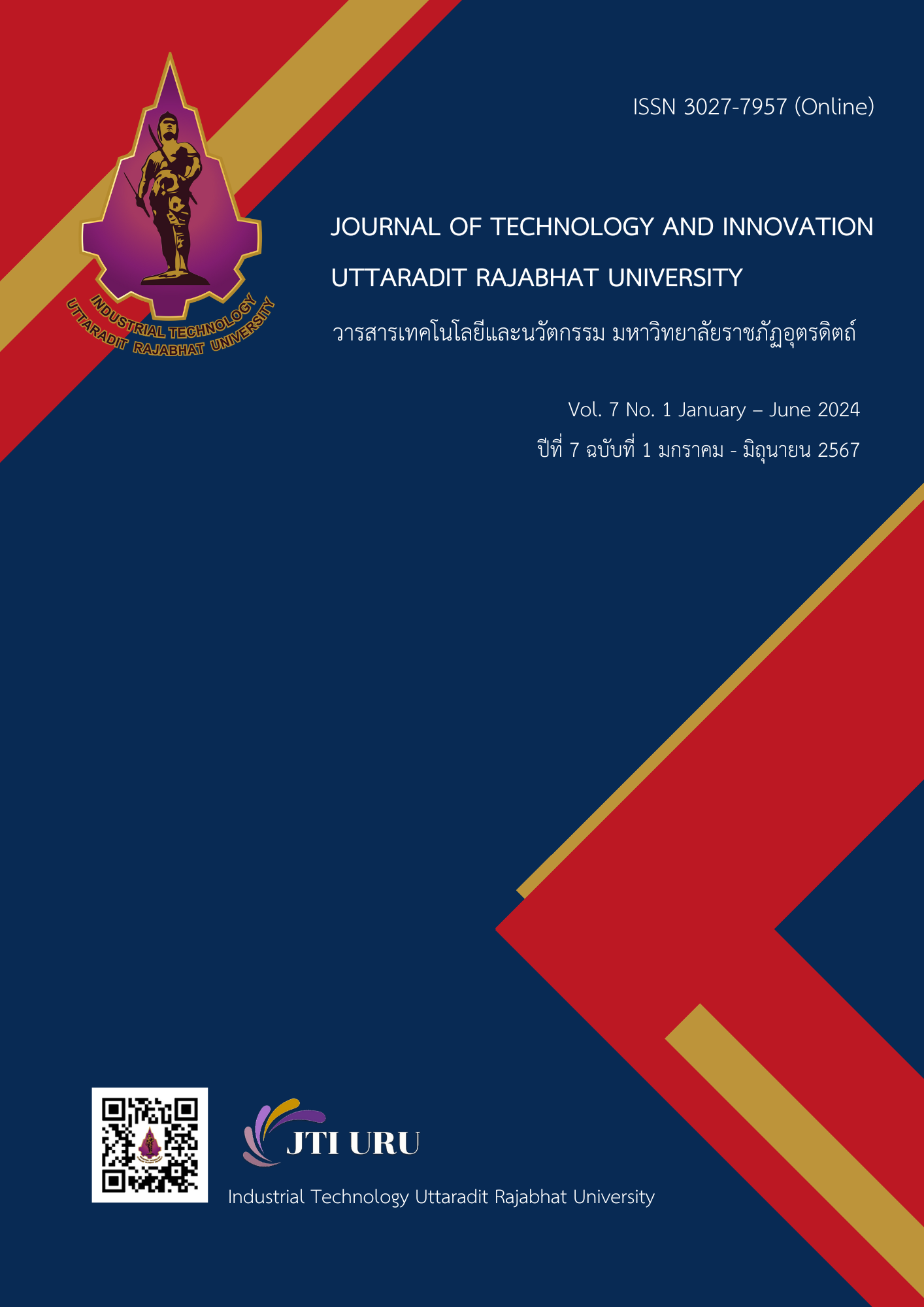Management of herbal learning centers according to the concept of sufficiency economy Case study, Pho Thong District Ang Thong Province
Main Article Content
Abstract
This research employs participatory action research to study the context and develop a supply chain model for a learning center. The study uses interview questionnaires and organizes forums for exchanging ideas and learning activities as tools. The results indicate that the context of the Herbal Learning Center, represented by four groups, serves as a foundation for learning, knowledge transfer, and the creation of network partnerships. These activities involve the cultivation, production, and processing of herbs, with development guidelines aimed at improving the community’s quality of life. The supply chain model connects all stages-upstream, midstream, and downstream-managing the entire system from raw material procurement to production, processing, and marketing of herbal health products in the community. Additionally, it fosters partnerships to expand the body of knowledge through learning and knowledge transfer. The management of the Herbal Learning Center is guided by the principles of the Sufficiency Economy philosophy of His Majesty King Rama IX, emphasizing sustainability and self-reliance.
Article Details

This work is licensed under a Creative Commons Attribution-NonCommercial-NoDerivatives 4.0 International License.
References
ประพันธ์ ภักดีกลุ. (2549). รูปแบบและปัจจัยในการเสริมสร้างความเข้มแข็งของชุมชนด้วยศักยภาพและ ภูมิปัญญาท้องถิ่นเพื่อการพัฒนาที่ยั่งยืน (รายงานการวิจัย). กรุงเทพฯ: มหาวิทยาลัยราชภัฏจันทรเกษม.
พระราชบัญญัติส่งเสริมวิสาหกิจชุมชน พ.ศ. 2548. (18 มกราคม 2548). ราชกิจจานุเบกษา ฉบับประกาศทั่วไป. เล่มที่ 122 ตอนที่ 6ก, หน้า 319-327.
รุ่งทิวา กองสอง. (2551). ความหลากหลายชนิดของพืชสมุนไพรและการใช้ประโยชน์ของชุมชน: กรณีศึกษาป่าชุมชนโคกหินลาด อำเภอเมือง จังหวัดมหาสารคาม (รายงานการวิจัย). มหาสารคาม: มหาวิทยาลัยมหาสารคาม.
วิมล วิโรจพันธุ์. (2548). วิถีไทย. กรุงเทพฯ: แสงดาว.
สันติ ศรีสวนแตง, ประสงค์ ตันพิชัย และทิพวัลย์ สีจันทร์. (2563). สถานการณ์ ศักยภาพและแนวทางในการจัดการสุขภาพชุมชนเพื่อเศรษฐกิจฐานราก: กรณีศึกษาสมุนไพรไทยพื้นที่ลุ่มแม่น้ำนครชัยศรี จังหวัดนครปฐม. วารสารการแพทย์แผนไทยและการแพทย์ทางเลือก, 18(2), 406-419.
สุวัฒนชัย สวัสดิผล. (2552). ทุนทางสังคมและการจัดการศูนย์การเรียนรู้ กรณีศึกษาพิพิธภัณฑ์ชุมชนมอญ บางกระดี่ เขตบางขุนเทียน กรุงเทพมหานคร. (วิทยานิพนธ์ปริญญามหาบัณฑิต). มหาวิทยาลัยธรรมศาสตร์.
Booker, A., Johnston, D., & Heinrich, M. (2012). Value chains of herbal medicinesResearch needs and key challenges in the context of ethnopharmacology. Journal of ethnopharmacology, 140(3), 624-633.

